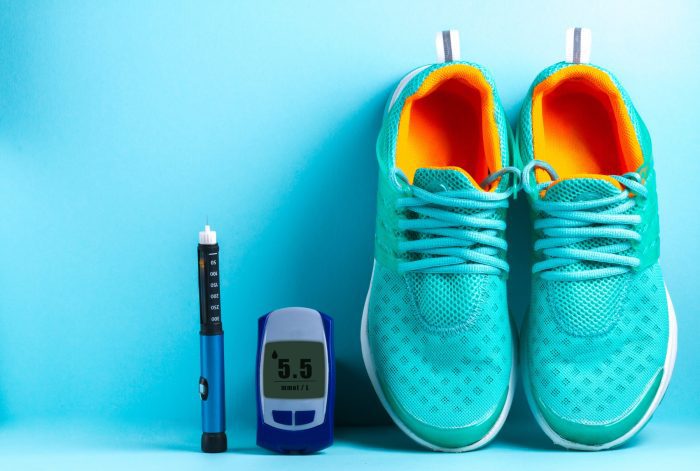Lowering inflammation and expanding lung capacity are keys
By David Dunaief, M.D.
Welcome to autumn! It’s the time of year when we revel in the beauty of changing foliage, the joy of Halloween decorations and costumes, and the prevalence “pumpkin spice” everything.
Unfortunately, it’s also the time of year when we are most alert to influenza (the flu), respiratory syncytial virus (RSV), and COVID-19 variants circulating in our communities.
If you have a lung disease, such as chronic obstructive pulmonary disease (COPD) or asthma, or if you smoke or vape, the consequences of these viruses are especially concerning.
The good news is that you can do a lot to improve your lung function by exercising, eating a plant-based diet with a focus on fruits and vegetables, expanding your lung capacity with an incentive spirometer, and quitting smoking or vaping (1).
Does diet improve lung function?
It’s no surprise that your dietary choices can help or hinder your health. What is surprising is diet’s impact on your lung health. Let’s review some of the studies.
In a randomized controlled trial (RCT), results show that asthma patients who ate a high-antioxidant diet had greater lung function after 14 days than those who ate a low-antioxidant diet (2). They also had lower inflammation at 14 weeks, which was measured using a c-reactive protein (CRP) biomarker. Participants in the low-antioxidant group were over two times more likely to have an asthma exacerbation.
The high-antioxidant group had a modest five servings of vegetables and two servings of fruit daily, while the low-antioxidant group ate no more than two servings of vegetables and one serving of fruit daily. Using carotenoid supplementation in place of antioxidant foods did not affect inflammation. The authors concluded that an increase in carotenoids from diet has a clinically significant impact on asthma in a very short period.
In a longer-term analysis of the Coronary Artery Risk Development in Young Adults (CARDIA) Study, researchers assessed and stratified diets into three tiers to identify the impacts of diet quality on long-term lung health (3). Researchers found that a nutritionally-rich plant-centered diet was associated with significantly less decline in lung function over 20 years, even after adjusting for demographic and lifestyle factors influencing lung health.
What is the impact of fiber on COPD risk?
Several studies demonstrate that higher consumption of fiber from plants decreases the risk of COPD in smokers and ex-smokers.
In one study of men, results showed that higher fiber intake was associated with significant 48 percent reductions in COPD incidence in smokers and 38 percent incidence reductions in ex-smokers (4). The high-fiber group ate at least 36.8 grams per day, compared to the low-fiber group, which ate less than 23.7 grams per day. Fiber sources were fruits, vegetables and whole grain. The “high-fiber” group was still below the American Dietetic Association’s recommended intake of 14 grams per 1,000 calories each day.
In another study, this time with women, participants who consumed at least 2.5 serving of fruit per day, compared to those who consumed less than 0.8 servings per day, experienced a highly significant 37 percent decreased risk of COPD (5).
Both studies used apples, bananas, and pears to reduce COPD risk.
What exercise helps improve lung function?
In a study involving healthy women aged 65 years and older, results showed that 20 minutes of high-intensity exercise three times a day improved FEV1 and FVC, both indicators of lung function, in just 12 weeks (7). Participants began with a 15-minute warm-up, then 20 minutes of high-intensity exercise on a treadmill, followed by 15 minutes of stretching.
You do not need special equipment. You can walk up steps or hills in your neighborhood, do jumping jacks, or even dance around your home. It’s most important to increase your heart rate and expand your lungs. If this is new for you, consult a physician and start slowly. Your stamina will improve quickly when you do it consistently.
What is incentive spirometry?
An incentive spirometer (IS) is a device that helps expand the lungs when you inhale through a tube and cause one or more balls to rise. This inhalation expands the lung’s alveoli.
Incentive spirometry has been used for patients with pneumonia, those who have had chest or abdominal surgery and those with asthma or COPD, but it has also been useful for healthy participants (8). A small study showed that those who trained with an incentive spirometer for two weeks increased their lung function and respiratory motion. Participants were 10 non-smoking healthy adults who took five sets of five deep breaths twice a day, totaling 50 deep breaths per day.
In recent years, some small studies examined the impact of IS on patient COVID-19 outcomes. One study of 48 patients in an outpatient setting found that study participants using an IS three times a day experienced a 16 percent increase in maximal inspiratory volume over a span of 30 days (9).
Another pilot study followed 10 patients diagnosed with moderate COVID-19 to determine whether IS use prevented development of Acute Respiratory Distress Syndrome (ARDS) (10). IS users had improved PaO2/FiO2 ratio, improved chest X-ray findings, shorter hospital stays, and sooner improvement of symptoms than non-users.
We all should be working to strengthen our lungs. Using a three-pronged approach including diet, aerobic exercise, and incentive spirometer can make a tremendous difference.
References:
(1) Public Health Rep. 2011 Mar-Apr; 126(2): 158-159. (2) Am J Clin Nutr. 2012 Sep;96(3):534-43. (3) Res Sq [Preprint]. 2023 Apr 26:rs.3.rs-2845326. [Version 1] (4) Epidemiology Mar 2018;29(2):254-260. (5) Int J Epidemiol Dec 1 2018;47(6);1897-1909. (6) J Phys Ther Sci. Aug 2017;29(8):1454-1457. (8) Ann Rehabil Med. Jun 2015;39(3):360-365. (9) Cureus. 2021 Oct 4;13(10):e18483. (10) Eur Resp J 2022 60: 268.
Dr. David Dunaief is a speaker, author and local lifestyle medicine physician focusing on the integration of medicine, nutrition, fitness and stress management. For further information, visit www.medicalcompassmd.com or consult your personal physician.



















